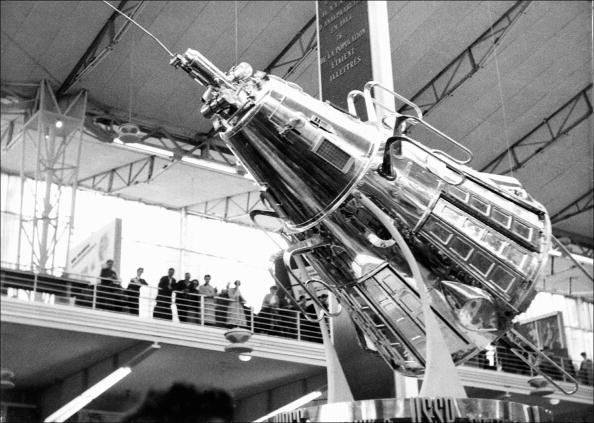Sixty years ago today, the space race began with the launch of the Soviet satellite Sputnik — the first man-made object to orbit the Earth.
The launch ushered in a wave of new political, military, technological and scientific advancements. "While the Sputnik launch was a single event, it marked the start of the space age and the U.S.-U.S.S.R space race," NASA said.
The satellite's four antennas sent back beeps heard on radios around the world. Cruising 500 miles above the globe at 18,000 mph, it completed an orbit every 96 minutes.
Though the actual object was just a 184-pound metal sphere with spikes, roughly the size of a beach ball, the idea that the Soviets had beaten the Americans to space was a shock to the world.
"Sputnik was the 9/11 of the day," noted former astronaut Mike Mullane on the 50th anniversary of the launch. "America was scared."
U.S. government officials, including President Dwight Eisenhower, underestimated the effect a Soviet satellite would have on the public, according to Smithsonian Air and Space magazine.
The signals from Sputnik continued for 21 days until the transmitter batteries ran out Oct. 26, 1957.
The Soviets followed up the launch with Sputnik II in early November 1957, carrying a much heavier payload, including a dog named Laika.
Immediately after the Sputnik I launch in October, the U.S. Defense Department responded to the political furor by approving funding for the Explorer satellite project.
On Jan. 31, 1958, the United States successfully launched Explorer I, and the space race was on. The Explorer program continued as a successful ongoing series of lightweight, scientifically useful spacecraft.
The Sputnik launch also led directly to the creation of NASA. In July 1958, Congress passed the National Aeronautics and Space Act (commonly called the "Space Act"), which created NASA as of October 1, 1958.
Military aspects aside, the launch of Sputnik ushered in the age of satellites that now play a vital role in the instant flow of information worldwide that we now take for granted. In all, there are some 1,459 operational satellites now in orbit above our heads, according to the Union of Concerned Scientists.
This is in addition to the more than 2,000 that are no longer functioning. That doesn't include the original Sputnik, which burned up on Jan. 4, 1958, while re-entering Earth's atmosphere.


